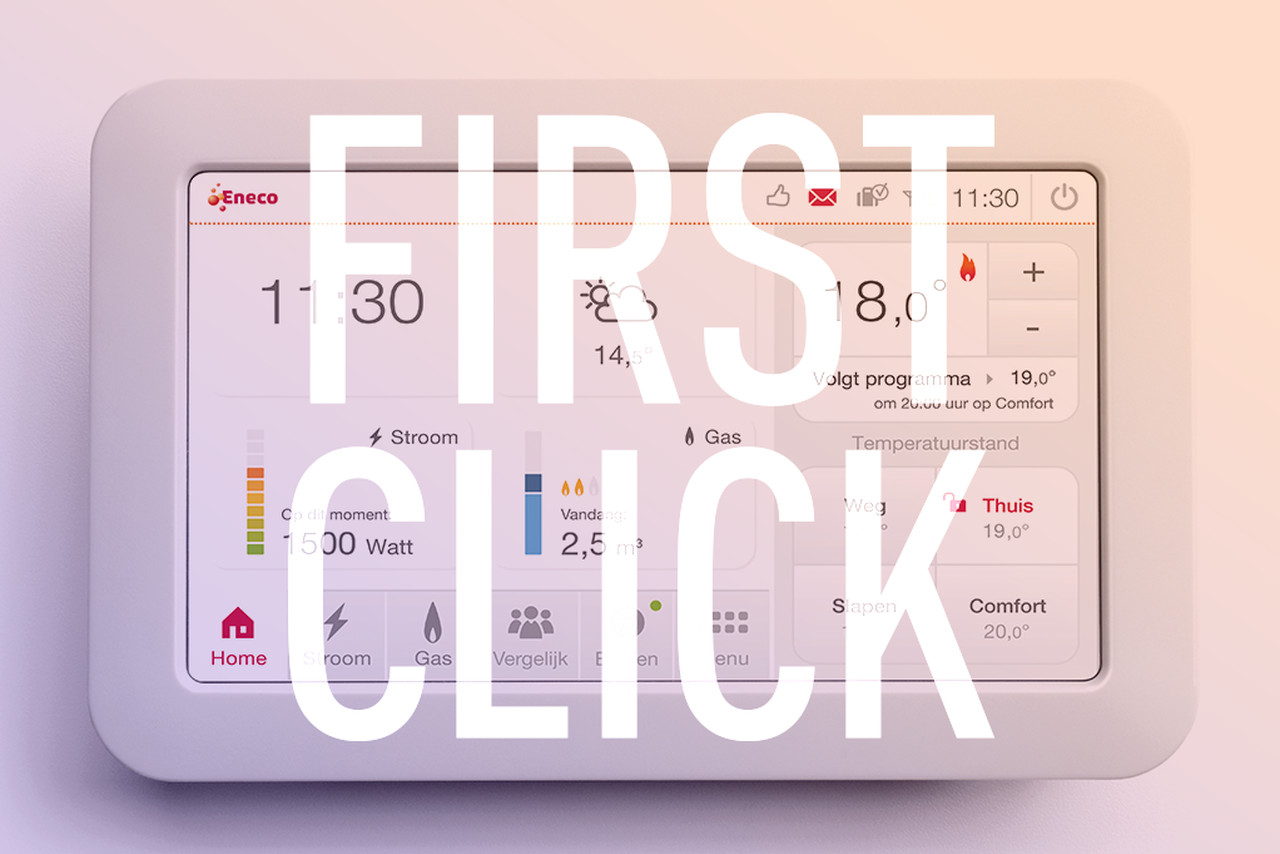2016/06/05 02:47:46:979 WPAnalytics session started
2016/06/05 02:47:47:235 ===========================================================================
2016/06/05 02:47:47:235 Launching WordPress for iOS 6.2 (6.2.0.4)...
2016/06/05 02:47:47:235 Crash count: 8
2016/06/05 02:47:47:235 Debug mode: Production
2016/06/05 02:47:47:235 Extra debug: YES
2016/06/05 02:47:47:235 Device model: iPhone 6 (iPhone7,2)
2016/06/05 02:47:47:235 OS: iPhone OS 9.3.2
2016/06/05 02:47:47:235 Language: en-US
2016/06/05 02:47:47:236 UDID: 6D8880A6-36C1-4C32-8082-542012B63818
2016/06/05 02:47:47:238 APN token: be75931fdcbdeee91e59bf1093228ee8471fc733f69392681143bdb494ab23ad
2016/06/05 02:47:47:238 Launch options: {
UIApplicationLaunchOptionsSourceApplicationKey = "org.wordpress.WordPressTodayWidget";
UIApplicationLaunchOptionsURLKey = "wordpress://viewstats?siteId=35200408";
}
2016/06/05 02:47:47:238 All blogs on device:
2016/06/05 02:47:47:244 <Blog Name: Ch1lleh URL:
https://elyssadblog.wordpress.com XML-RPC:
https://elyssadblog.wordpress.com/xmlrpc.php wp.com account: ch1llyw1lly blogId: 108242590>
2016/06/05 02:47:47:245 <Blog Name: DailyDDoSe © 2016 Elyssa D. Durant URL:
https://dailyddose.wordpress.com XML-RPC:
https://dailyddose.wordpresscom/xmlrpc.php wp.com account: dailyddose blogId: 35200408>
2016/06/05 02:47:47:245 <Blog Name: LizzieDizzie URL:
https://lizdurant.wordpress.com XML-RPC:
https://lizdurant.wordpress.com/xmlrpc.php wp.com account: dailyddose blogId: 37570738>
2016/06/05 02:47:47:245 ===========================================================================
2016/06/05 02:47:47:649 User-Agent set to: Mozilla/5.0 (iPhone; CPU iPhone OS 9_3_2 like Mac OS X) AppleWebKit/601.1.46 (KHTML, like Gecko) Mobile/13F69 wp-iphone/6.2
2016/06/05 02:47:47:834 MediaService cleanUnusedMediaFileFromTmpDir
2016/06/05 02:47:49:252 didFinishLaunchingWithOptions state: 1
2016/06/05 02:47:49:263 Application launched with URL: wordpress://viewstats?siteId=35200408
2016/06/05 02:47:49:276 Loading Stats for the following blog:
https://dailyddose.wordpress.com
2016/06/05 02:47:49:883 Device Token received in didRegisterForRemoteNotificationsWithDeviceToken: be75931fdcbdeee91e59bf1093228ee8471fc733f69392681143bdb494ab23ad
2016/06/05 02:47:49:959 0 media items to check for cleanup
2016/06/05 02:47:50:269 <WordPressAppDelegate: 0x12666f340> applicationDidBecomeActive:
2016/06/05 02:48:03:229 <WordPressAppDelegate: 0x12666f340> applicationWillResignActive:
2016/06/05 02:48:08:655 Application launched with URL: wordpress://viewstats?siteId=35200408
2016/06/05 02:48:08:659 Loading Stats for the following blog:
https://dailyddose.wordpress.com
2016/06/05 02:48:09:069 <WordPressAppDelegate: 0x12666f340> applicationDidBecomeActive:
2016/06/05 02:48:43:674 No instructions, do nothing
2016/06/05 02:48:48:148 Was unable to retrieve data about throttling
2016/06/05 02:48:48:152 Error received while checking feedback enabled status: Error Domain=NSURLErrorDomain Code=-1001 "The request timed out." UserInfo={NSUnderlyingError=0x12ad6a0b0 {Error Domain=kCFErrorDomainCFNetwork Code=-1001 "The request timed out." UserInfo={NSErrorFailingURLStringKey=
https://api.wordpress.org/iphoneapp/feedback-check/1.0/, NSErrorFailingURLKey=
https://api.wordpress.org/iphoneapp/feedback-check/1.0/, _kCFStreamErrorCodeKey=-2102, _kCFStreamErrorDomainKey=4, NSLocalizedDescription=The request timed out.}}, NSErrorFailingURLStringKey=
https://api.wordpress.org/iphoneapp/feedback-check/1.0/, NSErrorFailingURLKey=
https://api.wordpress.org/iphoneapp/feedback-check/1.0/, _kCFStreamErrorDomainKey=4, _kCFStreamErrorCodeKey=-2102, NSLocalizedDescription=The request timed out.}
2016/06/05 02:48:49:250 Failed syncing options for blog
https://dailyddose.wordpress.com: Error Domain=NSURLErrorDomain Code=-1001 "The request timed out." UserInfo={NSUnderlyingError=0x12af07ab0 {Error Domain=kCFErrorDomainCFNetwork Code=-1001 "The request timed out." UserInfo={NSErrorFailingURLStringKey=
https://public-api.wordpress.com/rest/v1.1/sites/35200408, NSErrorFailingURLKey=
https://public-api.wordpress.com/rest/v1.1/sites/35200408, _kCFStreamErrorCodeKey=-2102, _kCFStreamErrorDomainKey=4, NSLocalizedDescription=The request timed out.}}, NSErrorFailingURLStringKey=
https://public-api.wordpress.com/rest/v1.1/sites/35200408, NSErrorFailingURLKey=
https://public-api.wordpress.com/rest/v1.1/sites/35200408, _kCFStreamErrorDomainKey=4, _kCFStreamErrorCodeKey=-2102, NSLocalizedDescription=The request timed out.}
2016/06/05 02:48:49:251 Failed syncing post formats for blog
https://dailyddose.wordpress.com: Error Domain=NSURLErrorDomain Code=-1001 "The request timed out." UserInfo={NSUnderlyingError=0x12aed2080 {Error Domain=kCFErrorDomainCFNetwork Code=-1001 "The request timed out." UserInfo={NSErrorFailingURLStringKey=
https://public-api.wordpress.com/rest/v1.1/sites/35200408/post-formats, NSErrorFailingURLKey=
https://public-api.wordpress.com/rest/v1.1/sites/35200408/post-formats, _kCFStreamErrorCodeKey=-2102, _kCFStreamErrorDomainKey=4, NSLocalizedDescription=The request timed out.}}, NSErrorFailingURLStringKey=
https://public-api.wordpress.com/rest/v1.1/sites/35200408/post-formats, NSErrorFailingURLKey=
https://public-api.wordpress.com/rest/v1.1/sites/35200408/post-formats, _kCFStreamErrorDomainKey=4, _kCFStreamErrorCodeKey=-2102, NSLocalizedDescription=The request timed out.}
2016/06/05 02:48:49:255 Failed syncing categories for blog
https://dailyddose.wordpress.com: Error Domain=NSURLErrorDomain Code=-1001 "The request timed out." UserInfo={NSUnderlyingError=0x12ae1dd70 {Error Domain=kCFErrorDomainCFNetwork Code=-1001 "The request timed out." UserInfo={NSErrorFailingURLStringKey=
https://public-api.wordpress.com/rest/v1.1/sites/35200408/categories?context=edit, NSErrorFailingURLKey=
https://public-api.wordpress.com/rest/v1.1/sites/35200408/categories?context=edit, _kCFStreamErrorCodeKey=-2102, _kCFStreamErrorDomainKey=4, NSLocalizedDescription=The request timed out.}}, NSErrorFailingURLStringKey=
https://public-api.wordpress.com/rest/v1.1/sites/35200408/categories?context=edit, NSErrorFailingURLKey=
https://public-api.wordpress.com/rest/v1.1/sites/35200408/categories?context=edit, _kCFStreamErrorDomainKey=4, _kCFStreamErrorCodeKey=-2102, NSLocalizedDescription=The request timed out.}
2016/06/05 02:48:49:258 Failed checking muti-author status for blog
https://dailyddose.wordpress.com: Error Domain=NSURLErrorDomain Code=-1001 "The request timed out." UserInfo={NSUnderlyingError=0x12ac26e10 {Error Domain=kCFErrorDomainCFNetwork Code=-1001 "The request timed out." UserInfo={NSErrorFailingURLStringKey=
https://public-api.wordpress.com/rest/v1.1/sites/35200408/users?authors_only=1, NSErrorFailingURLKey=
https://public-api.wordpress.com/rest/v1.1/sites/35200408/users?authors_only=1, _kCFStreamErrorCodeKey=-2102, _kCFStreamErrorDomainKey=4, NSLocalizedDescription=The request timed out.}}, NSErrorFailingURLStringKey=
https://public-api.wordpress.com/rest/v1.1/sites/35200408/users?authors_only=1, NSErrorFailingURLKey=
https://public-api.wordpress.com/rest/v1.1/sites/35200408/users?authors_only=1, _kCFStreamErrorDomainKey=4, _kCFStreamErrorCodeKey=-2102, NSLocalizedDescription=The request timed out.}
2016/06/05 02:48:49:259 Failed syncing options for blog
https://dailyddose.wordpress.com: Error Domain=NSURLErrorDomain Code=-1001 "The request timed out." UserInfo={NSUnderlyingError=0x12ac4c490 {Error Domain=kCFErrorDomainCFNetwork Code=-1001 "The request timed out." UserInfo={NSErrorFailingURLStringKey=
https://public-api.wordpress.com/rest/v1.1/sites/35200408, NSErrorFailingURLKey=
https://public-api.wordpress.com/rest/v1.1/sites/35200408, _kCFStreamErrorCodeKey=-2102, _kCFStreamErrorDomainKey=4, NSLocalizedDescription=The request timed out.}}, NSErrorFailingURLStringKey=
https://public-api.wordpress.com/rest/v1.1/sites/35200408, NSErrorFailingURLKey=
https://public-api.wordpress.com/rest/v1.1/sites/35200408, _kCFStreamErrorDomainKey=4, _kCFStreamErrorCodeKey=-2102, NSLocalizedDescription=The request timed out.}
2016/06/05 02:48:49:262 Failed syncing post formats for blog
https://dailyddose.wordpress.com: Error Domain=NSURLErrorDomain Code=-1001 "The request timed out." UserInfo={NSUnderlyingError=0x126797a70 {Error Domain=kCFErrorDomainCFNetwork Code=-1001 "The request timed out." UserInfo={NSErrorFailingURLStringKey=
https://public-api.wordpress.com/rest/v1.1/sites/35200408/post-formats, NSErrorFailingURLKey=
https://public-api.wordpress.com/rest/v1.1/sites/35200408/post-formats, _kCFStreamErrorCodeKey=-2102, _kCFStreamErrorDomainKey=4, NSLocalizedDescription=The request timed out.}}, NSErrorFailingURLStringKey=
https://public-api.wordpress.com/rest/v1.1/sites/35200408/post-formats, NSErrorFailingURLKey=
https://public-api.wordpress.com/rest/v1.1/sites/35200408/post-formats, _kCFStreamErrorDomainKey=4, _kCFStreamErrorCodeKey=-2102, NSLocalizedDescription=The request timed out.}
2016/06/05 02:48:49:265 Failed syncing categories for blog
https://dailyddose.wordpress.com: Error Domain=NSURLErrorDomain Code=-1001 "The request timed out." UserInfo={NSUnderlyingError=0x12af4e290 {Error Domain=kCFErrorDomainCFNetwork Code=-1001 "The request timed out." UserInfo={NSErrorFailingURLStringKey=
https://public-api.wordpress.com/rest/v1.1/sites/35200408/categories?context=edit, NSErrorFailingURLKey=
https://public-api.wordpress.com/rest/v1.1/sites/35200408/categories?context=edit, _kCFStreamErrorCodeKey=-2102, _kCFStreamErrorDomainKey=4, NSLocalizedDescription=The request timed out.}}, NSErrorFailingURLStringKey=
https://public-api.wordpress.com/rest/v1.1/sites/35200408/categories?context=edit, NSErrorFailingURLKey=
https://public-api.wordpress.com/rest/v1.1/sites/35200408/categories?context=edit, _kCFStreamErrorDomainKey=4, _kCFStreamErrorCodeKey=-2102, NSLocalizedDescription=The request timed out.}
2016/06/05 02:48:49:269 Failed checking muti-author status for blog
https://dailyddose.wordpress.com: Error Domain=NSURLErrorDomain Code=-1001 "The request timed out." UserInfo={NSUnderlyingError=0x12aef59a0 {Error Domain=kCFErrorDomainCFNetwork Code=-1001 "The request timed out." UserInfo={NSErrorFailingURLStringKey=
https://public-api.wordpress.com/rest/v1.1/sites/35200408/users?authors_only=1, NSErrorFailingURLKey=
https://public-api.wordpress.com/rest/v1.1/sites/35200408/users?authors_only=1, _kCFStreamErrorCodeKey=-2102, _kCFStreamErrorDomainKey=4, NSLocalizedDescription=The request timed out.}}, NSErrorFailingURLStringKey=
https://public-api.wordpress.com/rest/v1.1/sites/35200408/users?authors_only=1, NSErrorFailingURLKey=
https://public-api.wordpress.com/rest/v1.1/sites/35200408/users?authors_only=1, _kCFStreamErrorDomainKey=4, _kCFStreamErrorCodeKey=-2102, NSLocalizedDescription=The request timed out.}
2016/06/05 02:48:49:287 Failed to fetch user details for account <WPAccount: 0x1265c89e0> (entity: Account; id: 0xd000000000040000 <x-coredata://DBD28BC7-0976-4A60-89CF-8FF0CF11355F/Account/p1> ; data: {
avatarURL = "
https://1.gravatar.com/avatar/75f5b759ccdec5bb500fc4432955b3ca?s=96&d=identicon";
blogs = "<relationship fault: 0x1278571f0 'blogs'>";
dateCreated = "2012-04-20 18:55:37 +0000";
defaultBlog = "0xd000000000040002 <x-coredata://DBD28BC7-0976-4A60-89CF-8FF0CF11355F/Blog/p1>";
displayName = Chilleh;
email = "
dailyddose@gmail.com";
jetpackBlogs = "<relationship fault: 0x12785dba0 'jetpackBlogs'>";
readerSites = "<relationship fault: 0x12ad00d80 'readerSites'>";
settings = "0xd000000000040004 <x-coredata://DBD28BC7-0976-4A60-89CF-8FF0CF11355F/AccountSettings/p1>";
userID = 35063852;
username = dailyddose;
uuid = "8C26809B-6F3D-4A64-9C77-8D9DF0D0E8C4";
}). Error Domain=NSURLErrorDomain Code=-1001 "The request timed out." UserInfo={NSUnderlyingError=0x12aecda00 {Error Domain=kCFErrorDomainCFNetwork Code=-1001 "The request timed out." UserInfo={NSErrorFailingURLStringKey=
https://public-api.wordpress.com/rest/v1.1/me, NSErrorFailingURLKey=
https://public-api.wordpress.com/rest/v1.1/me, _kCFStreamErrorCodeKey=-2102, _kCFStreamErrorDomainKey=4, NSLocalizedDescription=The request timed out.}}, NSErrorFailingURLStringKey=
https://public-api.wordpress.com/rest/v1.1/me, NSErrorFailingURLKey=
https://public-api.wordpress.com/rest/v1.1/me, _kCFStreamErrorDomainKey=4, _kCFStreamErrorCodeKey=-2102, NSLocalizedDescription=The request timed out.}
2016/06/05 02:48:50:285 Unable to register Device for Push Notifications: Error Domain=NSURLErrorDomain Code=-1001 "The request timed out." UserInfo={NSUnderlyingError=0x12a8a0c80 {Error Domain=kCFErrorDomainCFNetwork Code=-1001 "The request timed out." UserInfo={NSErrorFailingURLStringKey=
https://public-api.wordpress.com/rest/v1.1/devices/new, NSErrorFailingURLKey=
https://public-api.wordpress.com/rest/v1.1/devices/new, _kCFStreamErrorCodeKey=-2102, _kCFStreamErrorDomainKey=4, NSLocalizedDescription=The request timed out.}}, NSErrorFailingURLStringKey=
https://public-api.wordpress.com/rest/v1.1/devices/new, NSErrorFailingURLKey=
https://public-api.wordpress.com/rest/v1.1/devices/new, _kCFStreamErrorDomainKey=4, _kCFStreamErrorCodeKey=-2102, NSLocalizedDescription=The request timed out.}
2016/06/05 02:48:56:211 No instructions, do nothing
2016/06/05 02:49:05:690 TracksService Error while remote calling: Error Domain=NSURLErrorDomain Code=-1001 "The request timed out." UserInfo={NSUnderlyingError=0x12ac42e40 {Error Domain=kCFErrorDomainCFNetwork Code=-1001 "(null)" UserInfo={_kCFStreamErrorCodeKey=-2102, _kCFStreamErrorDomainKey=4}}, NSErrorFailingURLStringKey=
https://public-api.wordpress.com/rest/v1.1/tracks/record, NSErrorFailingURLKey=
https://public-api.wordpress.com/rest/v1.1/tracks/record, _kCFStreamErrorDomainKey=4, _kCFStreamErrorCodeKey=-2102, NSLocalizedDescription=The request timed out.}
2016/06/05 02:49:14:795 <WordPressAppDelegate: 0x12666f340> applicationWillResignActive:
2016/06/05 02:49:16:547 <WordPressAppDelegate: 0x12666f340> applicationDidEnterBackground:
2016/06/05 02:49:25:682 TracksService Error while remote calling: Error Domain=NSURLErrorDomain Code=-1001 "The request timed out." UserInfo={NSUnderlyingError=0x12afe7800 {Error Domain=kCFErrorDomainCFNetwork Code=-1001 "(null)" UserInfo={_kCFStreamErrorCodeKey=-2102, _kCFStreamErrorDomainKey=4}}, NSErrorFailingURLStringKey=
https://public-api.wordpress.com/rest/v1.1/tracks/record, NSErrorFailingURLKey=
https://public-api.wordpress.com/rest/v1.1/tracks/record, _kCFStreamErrorDomainKey=4, _kCFStreamErrorCodeKey=-2102, NSLocalizedDescription=The request timed out.}
2016/06/05 02:49:44:742 Showing alert with title: Unable to Sync and message The request timed out.
2016/06/05 02:50:17:937 TracksService Error while remote calling: Error Domain=NSURLErrorDomain Code=-1001 "The request timed out." UserInfo={NSUnderlyingError=0x1278a1680 {Error Domain=kCFErrorDomainCFNetwork Code=-1001 "(null)" UserInfo={_kCFStreamErrorCodeKey=-2102, _kCFStreamErrorDomainKey=4}}, NSErrorFailingURLStringKey=
https://public-api.wordpress.com/rest/v1.1/tracks/record, NSErrorFailingURLKey=
https://public-api.wordpress.com/rest/v1.1/tracks/record, _kCFStreamErrorDomainKey=4, _kCFStreamErrorCodeKey=-2102, NSLocalizedDescription=The request timed out.}
2016/06/05 02:50:47:432 <WordPressAppDelegate: 0x12666f340> applicationWillEnterForeground:
2016/06/05 02:50:48:488 <WordPressAppDelegate: 0x12666f340> applicationDidBecomeActive:
2016/06/05 02:51:54:173 Failed to fetch user details for account <WPAccount: 0x1265c89e0> (entity: Account; id: 0xd000000000040000 <x-coredata://DBD28BC7-0976-4A60-89CF-8FF0CF11355F/Account/p1> ; data: {
avatarURL = "
https://1.gravatar.com/avatar/75f5b759ccdec5bb500fc4432955b3ca?s=96&d=identicon";
blogs = "<relationship fault: 0x1278571f0 'blogs'>";
dateCreated = "2012-04-20 18:55:37 +0000";
defaultBlog = "0xd000000000040002 <x-coredata://DBD28BC7-0976-4A60-89CF-8FF0CF11355F/Blog/p1>";
displayName = Chilleh;
email = "
dailyddose@gmail.com";
jetpackBlogs = "<relationship fault: 0x12785dba0 'jetpackBlogs'>";
readerSites = "<relationship fault: 0x12ad00d80 'readerSites'>";
settings = "0xd000000000040004 <x-coredata://DBD28BC7-0976-4A60-89CF-8FF0CF11355F/AccountSettings/p1>";
userID = 35063852;
username = dailyddose;
uuid = "8C26809B-6F3D-4A64-9C77-8D9DF0D0E8C4";
}). Error Domain=NSURLErrorDomain Code=-1001 "The request timed out." UserInfo={NSUnderlyingError=0x12b1e0360 {Error Domain=kCFErrorDomainCFNetwork Code=-1001 "The request timed out." UserInfo={NSErrorFailingURLStringKey=
https://public-api.wordpress.com/rest/v1.1/me, NSErrorFailingURLKey=
https://public-api.wordpress.com/rest/v1.1/me, _kCFStreamErrorCodeKey=-2102, _kCFStreamErrorDomainKey=4, NSLocalizedDescription=The request timed out.}}, NSErrorFailingURLStringKey=
https://public-api.wordpress.com/rest/v1.1/me, NSErrorFailingURLKey=
https://public-api.wordpress.com/rest/v1.1/me, _kCFStreamErrorDomainKey=4, _kCFStreamErrorCodeKey=-2102, NSLocalizedDescription=The request timed out.}
2016/06/05 02:52:04:515 TracksService Error while remote calling: Error Domain=NSURLErrorDomain Code=-1001 "The request timed out." UserInfo={NSUnderlyingError=0x12b332500 {Error Domain=kCFErrorDomainCFNetwork Code=-1001 "(null)" UserInfo={_kCFStreamErrorCodeKey=-2102, _kCFStreamErrorDomainKey=4}}, NSErrorFailingURLStringKey=
https://public-api.wordpress.com/rest/v1.1/tracks/record, NSErrorFailingURLKey=
https://public-api.wordpress.com/rest/v1.1/tracks/record, _kCFStreamErrorDomainKey=4, _kCFStreamErrorCodeKey=-2102, NSLocalizedDescription=The request timed out.}
2016/06/05 02:53:20:581 TracksService Error while remote calling: Error Domain=NSURLErrorDomain Code=-1001 "The request timed out." UserInfo={NSUnderlyingError=0x12652c850 {Error Domain=kCFErrorDomainCFNetwork Code=-1001 "(null)" UserInfo={_kCFStreamErrorCodeKey=-2102, _kCFStreamErrorDomainKey=4}}, NSErrorFailingURLStringKey=
https://public-api.wordpress.com/rest/v1.1/tracks/record, NSErrorFailingURLKey=
https://public-api.wordpress.com/rest/v1.1/tracks/record, _kCFStreamErrorDomainKey=4, _kCFStreamErrorCodeKey=-2102, NSLocalizedDescription=The request timed out.}
2016/06/05 02:54:36:074 TracksService Error while remote calling: Error Domain=NSURLErrorDomain Code=-1001 "The request timed out." UserInfo={NSUnderlyingError=0x12b2533f0 {Error Domain=kCFErrorDomainCFNetwork Code=-1001 "(null)" UserInfo={_kCFStreamErrorCodeKey=-2102, _kCFStreamErrorDomainKey=4}}, NSErrorFailingURLStringKey=
https://public-api.wordpress.com/rest/v1.1/tracks/record, NSErrorFailingURLKey=
https://public-api.wordpress.com/rest/v1.1/tracks/record, _kCFStreamErrorDomainKey=4, _kCFStreamErrorCodeKey=-2102, NSLocalizedDescription=The request timed out.}
2016/06/05 02:55:52:122 TracksService Error while remote calling: Error Domain=NSURLErrorDomain Code=-1001 "The request timed out." UserInfo={NSUnderlyingError=0x12b0e4e70 {Error Domain=kCFErrorDomainCFNetwork Code=-1001 "(null)" UserInfo={_kCFStreamErrorCodeKey=-2102, _kCFStreamErrorDomainKey=4}}, NSErrorFailingURLStringKey=
https://public-api.wordpress.com/rest/v1.1/tracks/record, NSErrorFailingURLKey=
https://public-api.wordpress.com/rest/v1.1/tracks/record, _kCFStreamErrorDomainKey=4, _kCFStreamErrorCodeKey=-2102, NSLocalizedDescription=The request timed out.}




